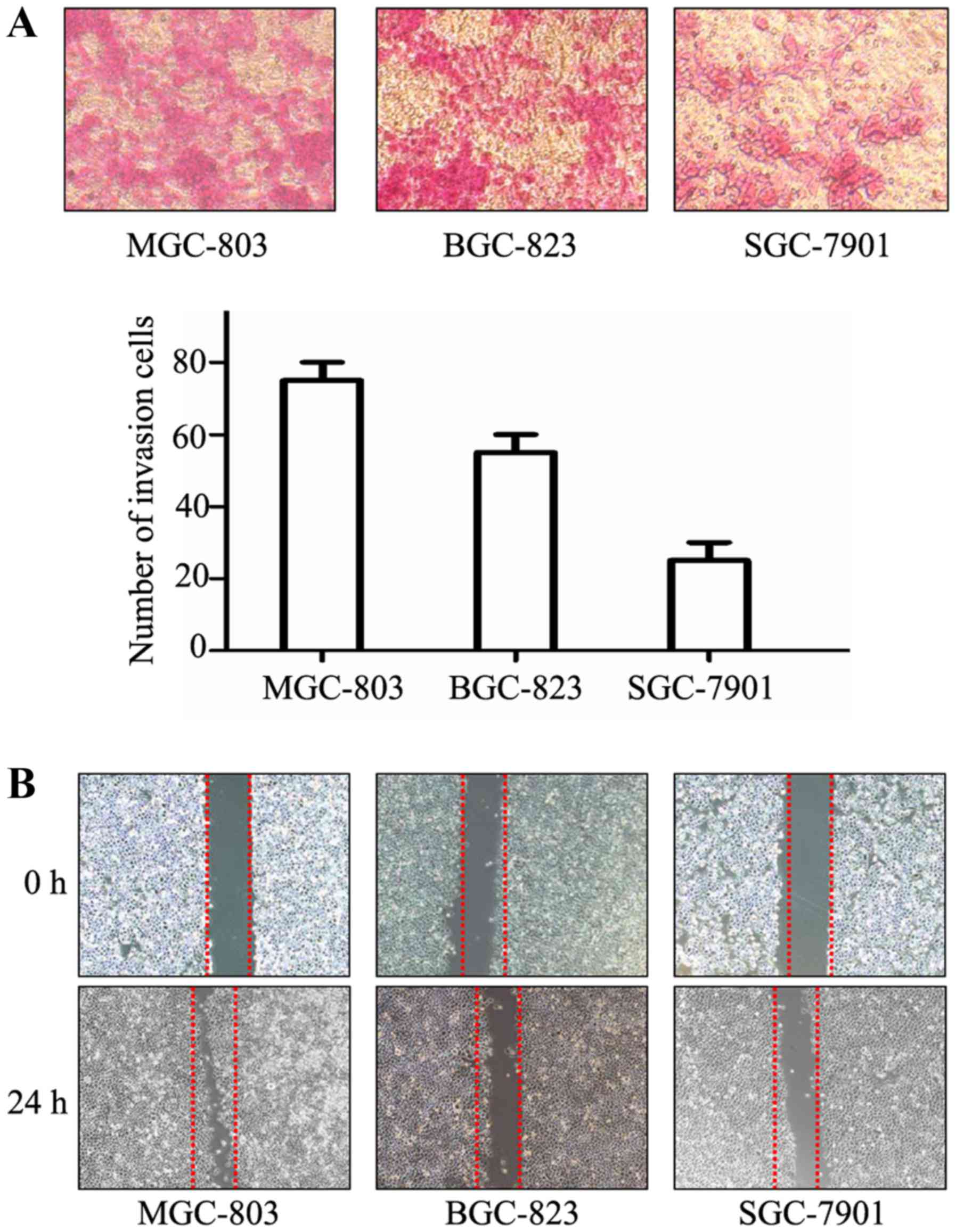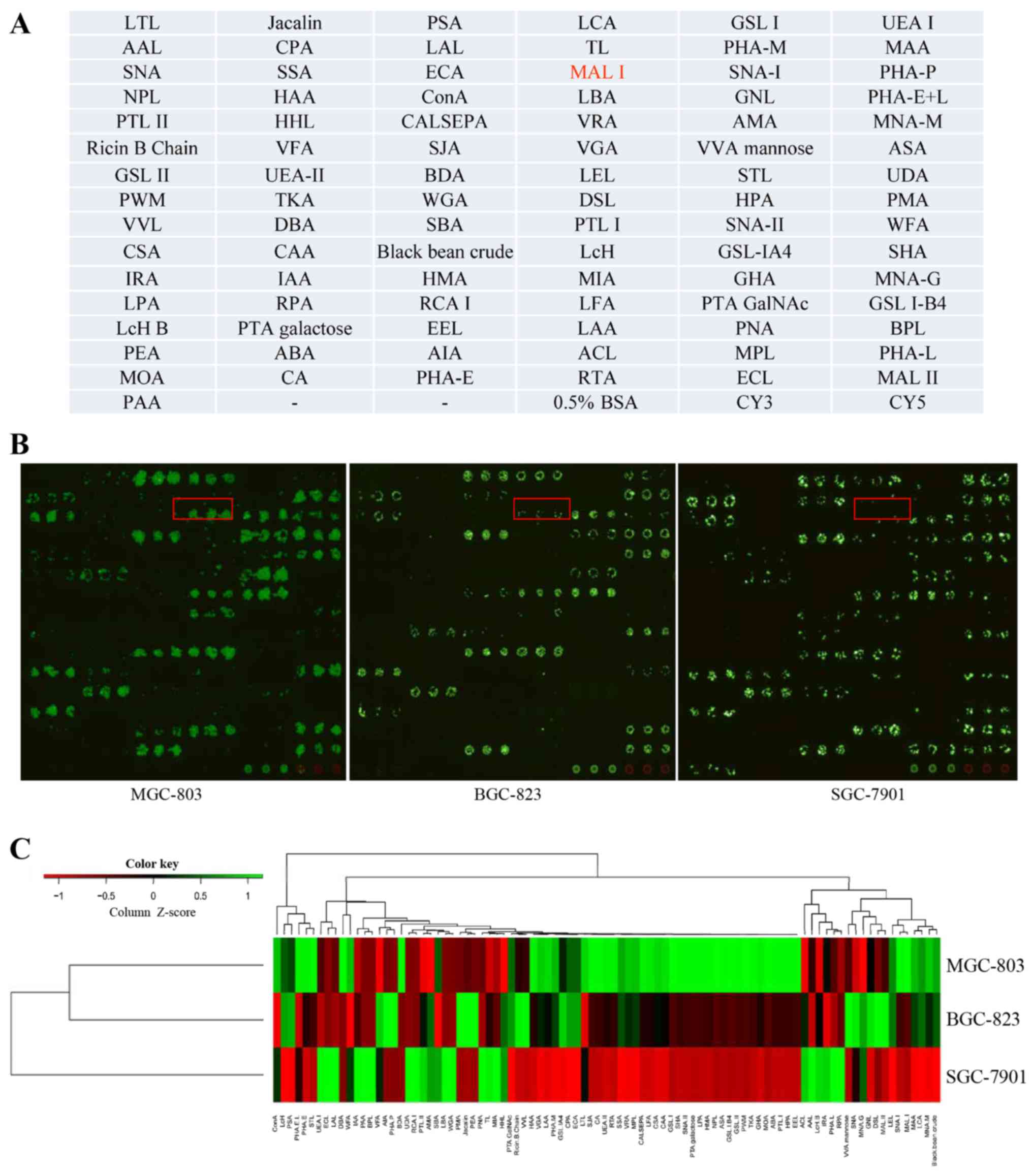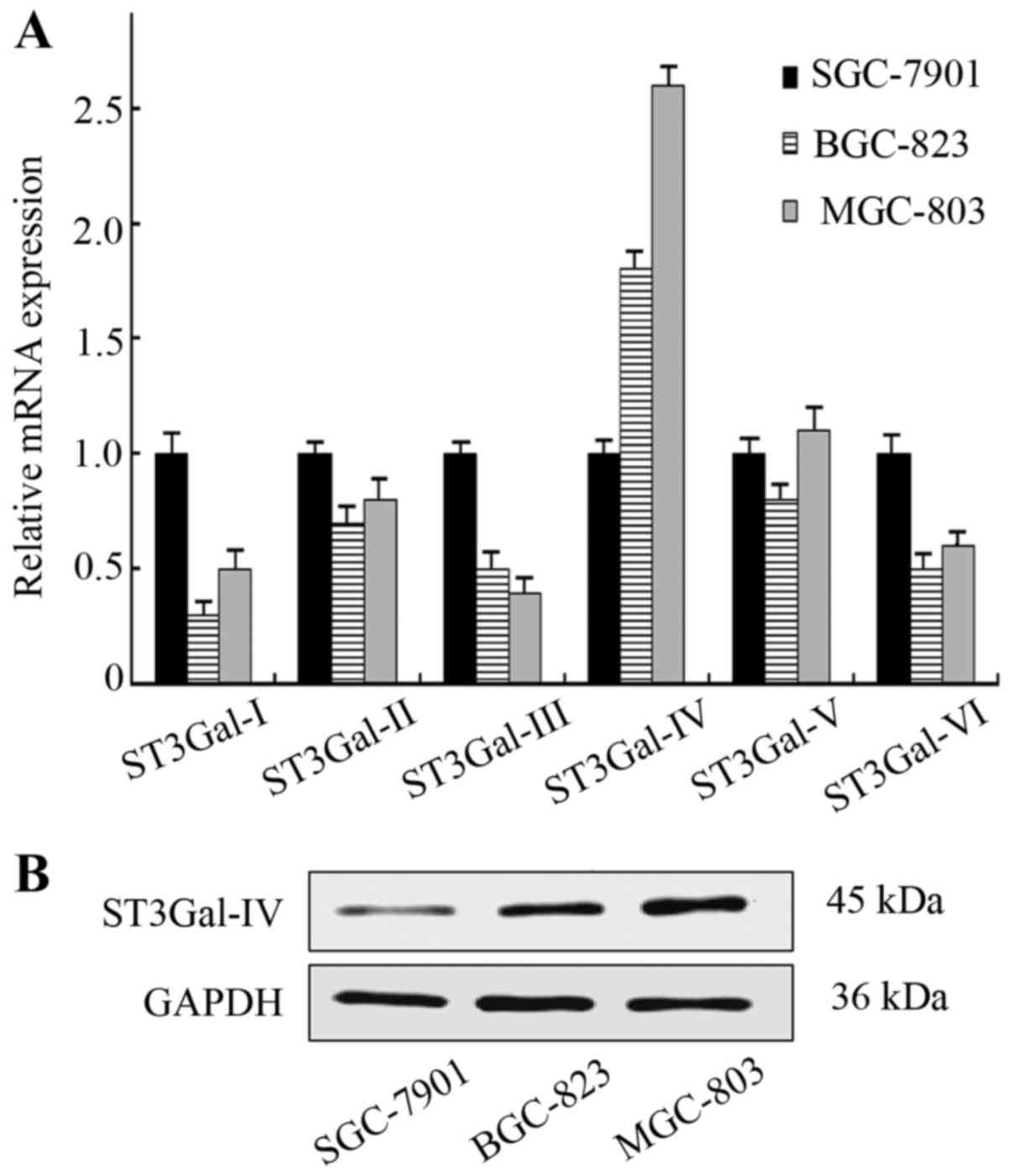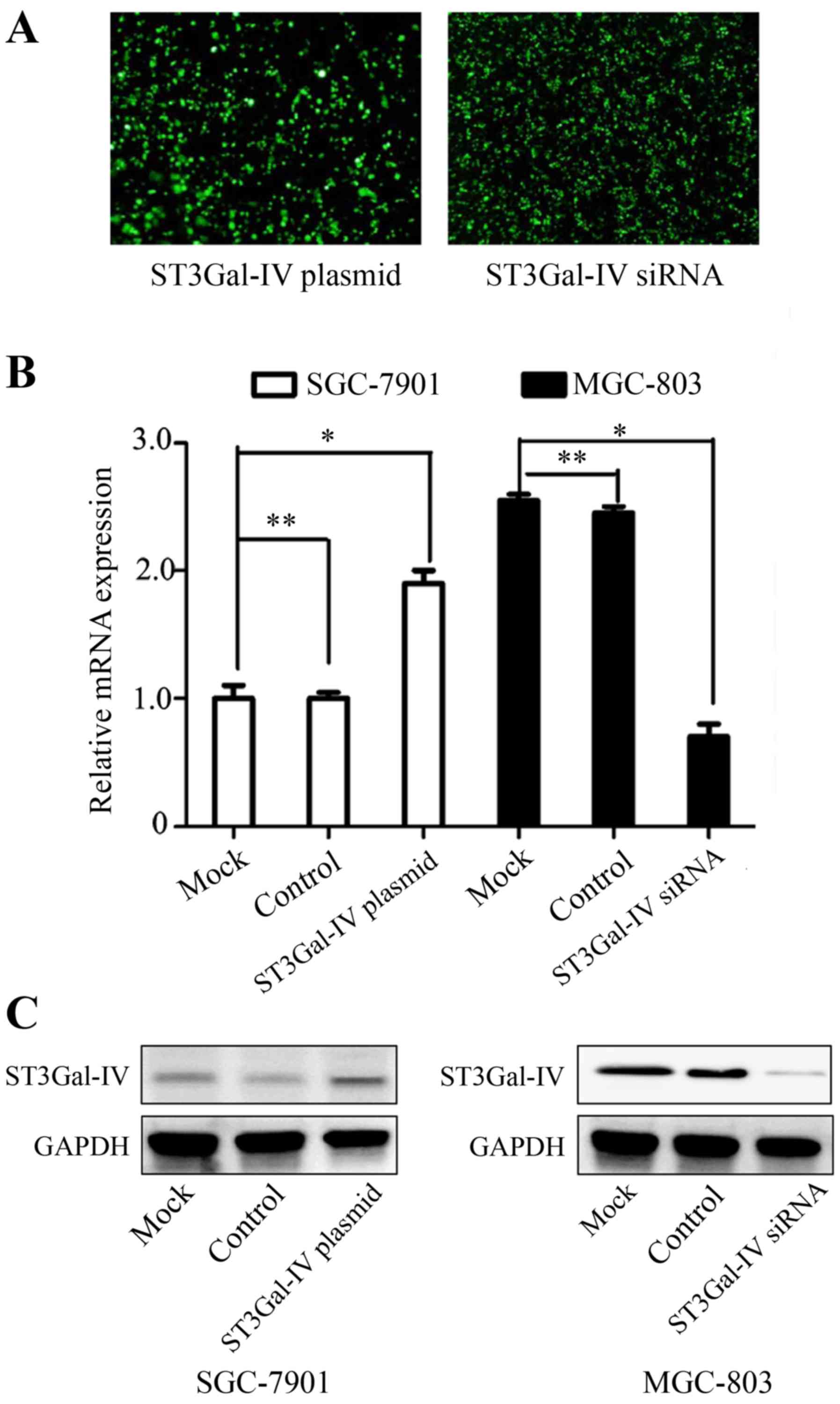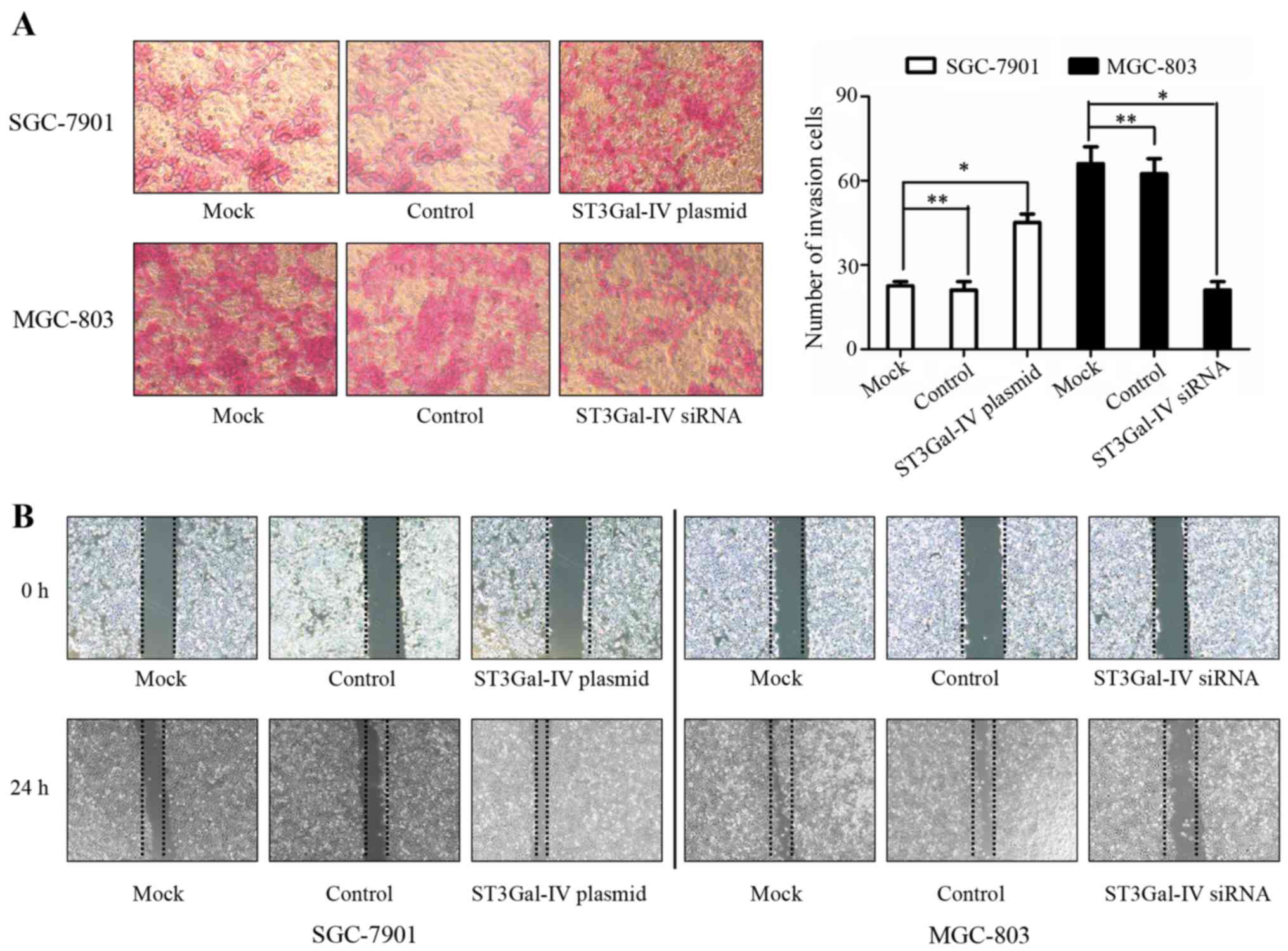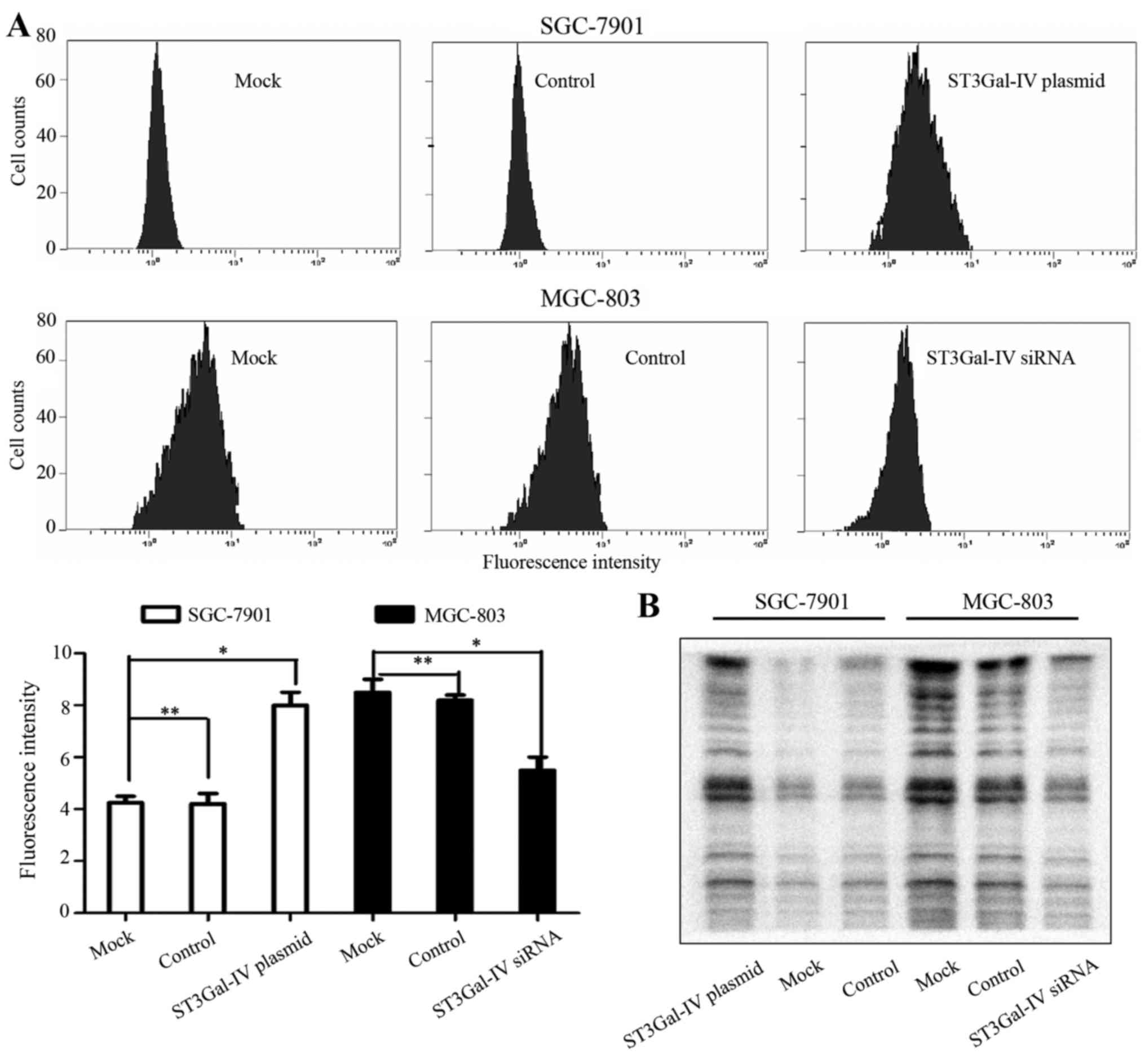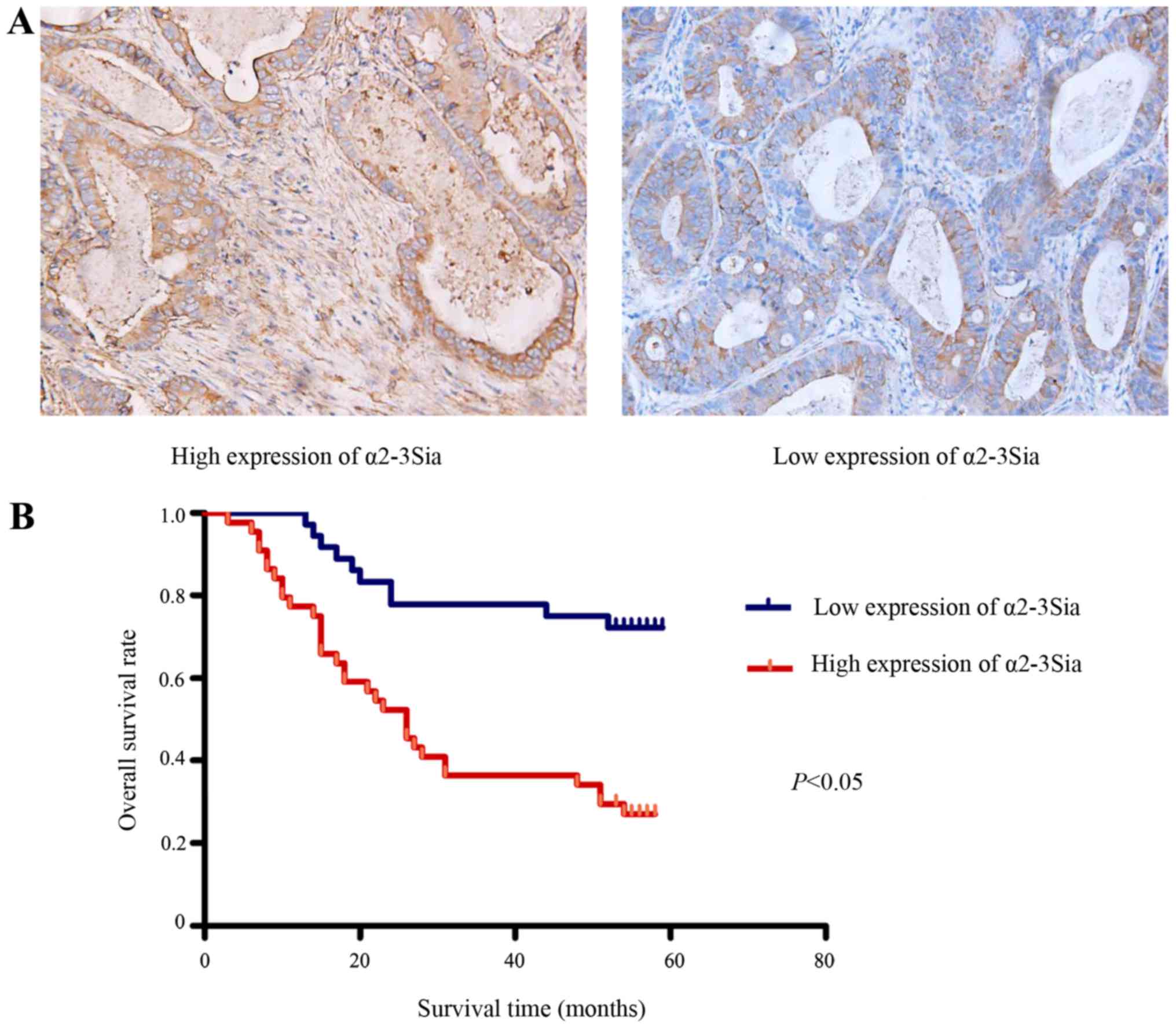|
1
|
Wang C, Zhang J, Cai M, Zhu Z, Gu W, Yu Y
and Zhang X: DBGC: A Database of Human Gastric Cancer. PLoS One.
10:e01425912015. View Article : Google Scholar : PubMed/NCBI
|
|
2
|
Torre LA, Bray F, Siegel RL, Ferlay J,
Lortet-Tieulent J and Jemal A: Global cancer statistics, 2012. CA
Cancer J Clin. 65:87–108. 2015. View Article : Google Scholar : PubMed/NCBI
|
|
3
|
Chen W, Zheng R, Baade PD, Zhang S, Zeng
H, Bray F, Jemal A, Yu XQ and He J: Cancer statistics in China,
2015. CA Cancer J Clin. 66:115–132. 2016. View Article : Google Scholar : PubMed/NCBI
|
|
4
|
Liu X, Ge X, Zhang Z, Zhang X, Chang J, Wu
Z, Tang W, Gan L, Sun M and Li J: MicroRNA-940 promotes tumor cell
invasion and metastasis by downregulating ZNF24 in gastric cancer.
Oncotarget. 6:25418–25428. 2015. View Article : Google Scholar : PubMed/NCBI
|
|
5
|
Hart GW and Copeland RJ: Glycomics hits
the big time. Cell. 143:672–676. 2010. View Article : Google Scholar : PubMed/NCBI
|
|
6
|
Munkley J and Elliott DJ: Hallmarks of
glycosylation in cancer. Oncotarget. 7:35478–35489. 2016.PubMed/NCBI
|
|
7
|
Pinho SS and Reis CA: Glycosylation in
cancer: Mechanisms and clinical implications. Nat Rev Cancer.
15:540–555. 2015. View
Article : Google Scholar : PubMed/NCBI
|
|
8
|
Tsai CH, Tzeng SF, Chao TK, Tsai CY, Yang
YC, Lee MT, Hwang JJ, Chou YC, Tsai MH, Cha TL, et al: Metastatic
progression of prostate cancer is mediated by autonomous binding of
galectin-4-O-glycan to cancer cells. Cancer Res. 76:5756–5767.
2016. View Article : Google Scholar : PubMed/NCBI
|
|
9
|
Zhang X, Wang Y, Qian Y, Wu X, Zhang Z,
Liu X, Zhao R, Zhou L, Ruan Y, Xu J, et al: Discovery of specific
metastasis-related N-glycan alterations in epithelial ovarian
cancer based on quantitative glycomics. PLoS One. 9:e879782014.
View Article : Google Scholar : PubMed/NCBI
|
|
10
|
Liu L, Yan B, Huang J, Gu Q, Wang L, Fang
M, Jiao J and Yue X: The identification and characterization of
novel N-glycan-based biomarkers in gastric cancer. PLoS One.
8:e778212013. View Article : Google Scholar : PubMed/NCBI
|
|
11
|
Zhao YP, Xu XY, Fang M, Wang H, You Q, Yi
CH, Ji J, Gu X, Zhou PT, Cheng C, et al: Decreased
core-fucosylation contributes to malignancy in gastric cancer. PLoS
One. 9:e945362014. View Article : Google Scholar : PubMed/NCBI
|
|
12
|
Wang FL, Cui SX, Sun LP, Qu XJ, Xie YY,
Zhou L, Mu YL, Tang W and Wang YS: High expression of alpha
2,3-linked sialic acid residues is associated with the metastatic
potential of human gastric cancer. Cancer Detect Prev. 32:437–443.
2009. View Article : Google Scholar
|
|
13
|
Shen L, Yu M, Xu X, Gao L, Ni J, Luo Z and
Wu S: Knockdown of β3GnT8 reverses 5-fluorouracil resistance in
human colorectal cancer cells via inhibition the biosynthesis of
polylactosamine-type N-glycans. Int J Oncol. 45:2560–2568.
2014.PubMed/NCBI
|
|
14
|
Wang X, He H, Zhang H, Chen W, Ji Y, Tang
Z, Fang Y, Wang C, Liu F, Shen Z, et al: Clinical and prognostic
implications of β1, 6-N-acetylglucosaminyltransferase V in patients
with gastric cancer. Cancer Sci. 104:185–193. 2013. View Article : Google Scholar
|
|
15
|
Badr HA, Elsayed AI, Ahmed H, Dwek MV, Li
CZ and Djansugurova LB: Preferential lectin binding of cancer cells
upon sialic acid treatment under nutrient deprivation. Appl Biochem
Biotechnol. 171:963–974. 2013. View Article : Google Scholar : PubMed/NCBI
|
|
16
|
Nie H, Liu X, Zhang Y, Li T, Zhan C, Huo
W, He A, Yao Y, Jin Y, Qu Y, et al: Specific N-glycans of
hepatocellular carcinoma cell surface and the abnormal increase of
core-α-1,6-fucosylated triantennary glycan via
N-acetylglucosaminyltransferases-IVa regulation. Sci Rep.
5:160072015. View Article : Google Scholar
|
|
17
|
Häuselmann I and Borsig L: Altered
tumor-cell glycosylation promotes metastasis. Front Oncol.
4:282014. View Article : Google Scholar : PubMed/NCBI
|
|
18
|
Hirabayashi J, Kuno A and Tateno H:
Development and applications of the lectin microarray. Top Curr
Chem. 367:105–124. 2015. View Article : Google Scholar : PubMed/NCBI
|
|
19
|
Tao SC, Li Y, Zhou J, Qian J, Schnaar RL,
Zhang Y, Goldstein IJ, Zhu H and Schneck JP: Lectin microarrays
identify cell-specific and functionally significant cell surface
glycan markers. Glycobiology. 18:761–769. 2008. View Article : Google Scholar : PubMed/NCBI
|
|
20
|
Zhou SM, Cheng L, Guo SJ, Wang Y,
Czajkowsky DM, Gao H, Hu XF and Tao SC: Lectin RCA-I specifically
binds to metastasis-associated cell surface glycans in
triple-negative breast cancer. Breast Cancer Res. 17:362015.
View Article : Google Scholar : PubMed/NCBI
|
|
21
|
Nakajima K, Inomata M, Iha H, Hiratsuka T,
Etoh T, Shiraishi N, Kashima K and Kitano S: Establishment of new
predictive markers for distant recurrence of colorectal cancer
using lectin microarray analysis. Cancer Med. 4:293–302. 2015.
View Article : Google Scholar :
|
|
22
|
Fry SA, Afrough B, Lomax-Browne HJ, Timms
JF, Velentzis LS and Leathem AJ: Lectin microarray profiling of
metastatic breast cancers. Glycobiology. 21:1060–1070. 2011.
View Article : Google Scholar : PubMed/NCBI
|
|
23
|
Mitsui Y, Yamada K, Hara S, Kinoshita M,
Hayakawa T and Kakehi K: Comparative studies on glycoproteins
expressing polylactosamine-type N-glycans in cancer cells. J Pharm
Biomed Anal. 70:718–726. 2012. View Article : Google Scholar : PubMed/NCBI
|
|
24
|
Ayaz Ahmed KB, Mohammed AS and Veerappan
A: Interaction of sugar stabilized silver nanoparticles with the
T-antigen specific lectin, jacalin from Artocarpus integrifolia.
Spectrochim Acta A Mol Biomol Spectrosc. 145:110–116. 2015.
View Article : Google Scholar : PubMed/NCBI
|
|
25
|
Kinoshita M, Mitsui Y, Kakoi N, Yamada K,
Hayakawa T and Kakehi K: Common glycoproteins expressing
polylactosamine-type glycans on matched patient primary and
metastatic melanoma cells show different glycan profiles. J
Proteome Res. 13:1021–1033. 2014. View Article : Google Scholar
|
|
26
|
Carneiro F, David L and Sobrinho-Simões M:
Prognostic significance of T antigen expression in patients with
gastric carcinoma. Cancer. 78:2448–2450. 1996. View Article : Google Scholar : PubMed/NCBI
|
|
27
|
Cui H, Lin Y, Yue L, Zhao X and Liu J:
Differential expression of the α2,3-sialic acid residues in breast
cancer is associated with metastatic potential. Oncol Rep.
25:1365–1371. 2011.PubMed/NCBI
|
|
28
|
Schultz MJ, Swindall AF and Bellis SL:
Regulation of the metastatic cell phenotype by sialylated glycans.
Cancer Metastasis Rev. 31:501–518. 2012. View Article : Google Scholar : PubMed/NCBI
|
|
29
|
Liu YC, Yen HY, Chen CY, Chen CH, Cheng
PF, Juan YH, Chen CH, Khoo KH, Yu CJ, Yang PC, et al: Sialylation
and fucosylation of epidermal growth factor receptor suppress its
dimerization and activation in lung cancer cells. Proc Natl Acad
Sci USA. 108:11332–11337. 2011. View Article : Google Scholar : PubMed/NCBI
|
|
30
|
Wang S, Chen X, Wei A, Yu X, Niang B and
Zhang J: α2,6-linked sialic acids on N-glycans modulate the
adhesion of hepatocarcinoma cells to lymph nodes. Tumour Biol.
36:885–892. 2015. View Article : Google Scholar
|
|
31
|
Petretti T, Kemmner W, Schulze B and
Schlag PM: Altered mRNA expression of glycosyltransferases in human
colorectal carcinomas and liver metastases. Gut. 46:359–366. 2000.
View Article : Google Scholar : PubMed/NCBI
|
|
32
|
Petretti T, Schulze B, Schlag PM and
Kemmner W: Altered mRNA expression of glycosyltransferases in human
gastric carcinomas. Biochim Biophys Acta. 1428:209–218. 1999.
View Article : Google Scholar : PubMed/NCBI
|
|
33
|
Higai K, Miyazaki N, Azuma Y and Matsumoto
K: Interleukin-1beta induces sialyl Lewis X on hepatocellular
carcinoma HuH-7 cells via enhanced expression of ST3Gal IV and FUT
VI gene. FEBS Lett. 580:6069–6075. 2006. View Article : Google Scholar : PubMed/NCBI
|
|
34
|
Zhang Y, Zhao W, Zhao Y and He Q:
Expression of ST3Gal, ST6Gal, ST6GalNAc and ST8Sia in human hepatic
carcinoma cell lines, HepG-2 and SMMC-7721 and normal hepatic cell
line, L-02. Glycoconj J. 32:39–47. 2015. View Article : Google Scholar : PubMed/NCBI
|
|
35
|
Pérez-Garay M, Arteta B, Llop E, Cobler L,
Pagès L, Ortiz R, Ferri MJ, de Bolós C, Figueras J, de Llorens R,
et al: α2,3-Sialyltransferase ST3Gal IV promotes migration and
metastasis in pancreatic adenocarcinoma cells and tends to be
highly expressed in pancreatic adenocarcinoma tissues. Int J
Biochem Cell Biol. 45:1748–1757. 2013. View Article : Google Scholar
|
|
36
|
Gomes C, Osorio H, Pinto MT and Celso A:
Overexpression of ST3Gal-IV induces activation of cell signaling
pathways and alteration in gastric cancer cell line phenotype.
Glycobiology. 22:1645–1646. 2012.
|
|
37
|
Colomb F, Vidal O, Bobowski M,
Krzewinski-Recchi MA, Harduin-Lepers A, Mensier E, Jaillard S,
Lafitte JJ, Delannoy P and Groux-Degroote S: TNF induces the
expression of the sialyltransferase ST3Gal IV in human bronchial
mucosa via MSK1/2 protein kinases and increases
FliD/sialyl-Lewis(x)-mediated adhesion of Pseudomonas aeruginosa.
Biochem J. 457:79–87. 2014. View Article : Google Scholar
|



